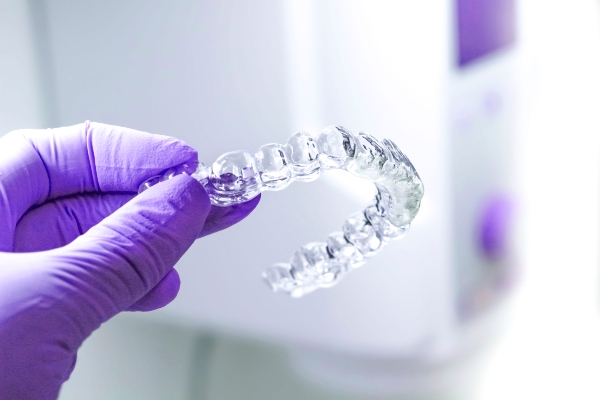Are Braces a Part of Phase 1 Orthodontics?

Early orthodontic therapy, also known as Phase 1 or interceptive orthodontics, focuses on preventing more serious issues in the future. It is easier to correct certain orthodontic problems if the treatment occurs early. For example, correcting the jaws' structure during development allows a pediatric dentist to manage the space available for permanent teeth and correct bite abnormalities. Children's bites are normally developed by the time they are 7 years old, which is when dental professionals would notice signs of crowding. Continue reading to find out if your child may need braces through phase 1 orthodontics.
Overview of phase 1 orthodontics
Phase 1 orthodontics is a problem-solving procedure focusing on one key issue in the oral cavity of a young child. While this treatment usually lasts a year, it can be as brief as six months or as long as eighteen months.
Treatment options for phase 1 orthodontics may include:
- Expansion appliances (i.e., rapid palatal expander)
- Functional appliances (e.g., bionater, Herbst appliance, twin block appliance)
- A limited phase of braces
- Orthodontic headgear
- Space maintainers
- Specialized retainers
The dental specialist may decide to use only one of these orthodontic appliances as part of the child's phase 1 treatment. In other cases, they may combine an orthodontic device like limited braces with extracting a few of the child's baby teeth; metal, transparent, or gold braces can be used for early orthodontic therapy. Since phase 1 orthodontics usually commences when a child is in the mixed dentition stage, the dental professional may choose to put braces on some of the baby teeth as well. Each treatment plan goes on a case-by-case basis, and the orthodontist will determine the course of treatment based on the orthodontic goals they have for the young patient.
The need for phase 1 orthodontics
Early braces treatments are hands-on, aiming to address major issues before they escalate into larger issues later in life, such as dental trauma, permanent tooth loss, and jaw surgery. At times, untreated orthodontic issues pose a greater risk to repair when the child is older. While phase 1 braces are not necessary for every child with orthodontic issues, parents should be proactive and help their children avoid additional complications as they grow up.
The benefits of phase 1 orthodontics
Phase 1 orthodontic appliances utilize appliances that help guide the growth of the upper and lower jaws. The dentist maximizes the kid's active growing period, allowing their mouth to have enough room for when all of the child's permanent teeth erupt. In addition, it prevents overcrowding and future intervention to fix the jaw alignment.
Other benefits of phase 1 orthodontics include:
- Boosting a child's self-esteem and confidence
- Breaking a prolonged thumb or finger-sucking habit
- Encouraging jaw growth, which can prevent the need for jaw surgery
- Guiding growth instead of applying excessive force
- Identifying damage from the impaction of or displaced permanent teeth
- Providing a shorter period of time of wearing braces
- Reducing the need for future extractions
Ideal candidates for phase 1 orthodontics
In addition, the dental specialist might take advantage of this stage of development to correct severe or deep overbites and make room on the jaw for overcrowding. Other candidates for early orthodontic treatment include kids with crossbites on their front or back teeth, flared upper teeth, open bites, and other crowding or misalignment issues.
Not all children are good candidates for phase one orthodontic therapy. For example, children with poor dental hygiene, tooth decay, or who refuse to follow diet restrictions while wearing braces are not good prospects. These habits increase the risk of the treatment causing more damage to the child's teeth.
What to expect from early orthodontic treatment
The orthodontist will discuss the child's eligibility for early orthodontic treatment with the patient's parents. If the child is not yet ready, the dental specialist will continue to observe them to determine the optimum time to begin treatment. The first step in determining if a child needs phase 1 orthodontics is to take them on a visit to a pediatric dental specialist. They will monitor the growth and development of the jaws and the eruption of the teeth at each check-up. If an issue arises, the dental professional will check to see if the child needs orthodontic treatment.
Phase 1 orthodontic treatment typically lasts between nine to 18 months. After this, the pediatric dentist or orthodontist will likely give the child a retainer and periodically check the child's mouth every four to six months while they wait for the remaining teeth to erupt. Then, if needed, the dental specialist may recommend further intervention with braces on the permanent teeth; this would entail the phase 2 treatment period, lasting from 12 to 20 months.
In conclusion
Dental professionals recommend that a child's first orthodontic consultation happens no later than age seven. The pediatric dentist will not only monitor the child's teeth and gums to prevent decay and ensure good oral health, but they may also discover elusive skeletal developmental issues that may cause future orthodontic problems. In that case, they may recommend phase 1 orthodontics, which may include the use of braces or another phase 1 orthodontic appliance.
Request an appointment here: https://www.orthodonticprecision.com or call Precision Orthodontics & Pediatric Dentistry at (703) 391-8800 for an appointment in our Reston office.
Check out what others are saying about our dental services on Yelp: Orthodontics for Children in Reston, VA.
Recent Posts
Misaligned teeth are not just an aesthetic issue; they can lead to numerous problems, including oral pain, speech, and digestive issues, and increased tooth decay and gum disease. Invisalign® for teens is very effective in straightening teeth for improved confidence and better oral health. This type of treatment also offers unique perks that traditional braces…
A teenage boy or girl who deals with a crooked smile or uneven bite could be able to use Invisalign® for teens as a corrective treatment. The adolescent and high schools years are often filled with social pressure and a desire for acceptance, and any problems or concerns with a teen’s smile could create self-confidence…
If you are a teenager whose dentist recommends Invisalign to straighten your teeth, you may wonder what the product is. Many dentists advise Invisalign® for teens as a discreet and reliable method of treating crooked teeth. However, you may only be familiar with traditional braces. Invisalign is a different way to fix malocclusions or imperfect…
A significant advantage of Invisalign® for teens is that it makes the treatment more discreet and less conspicuous than traditional braces. Nevertheless, you may be worried that the treatment will affect your speech. While this is possible, it is usually temporary, and there are things you can do to lessen the effects.The clear aligners used…


